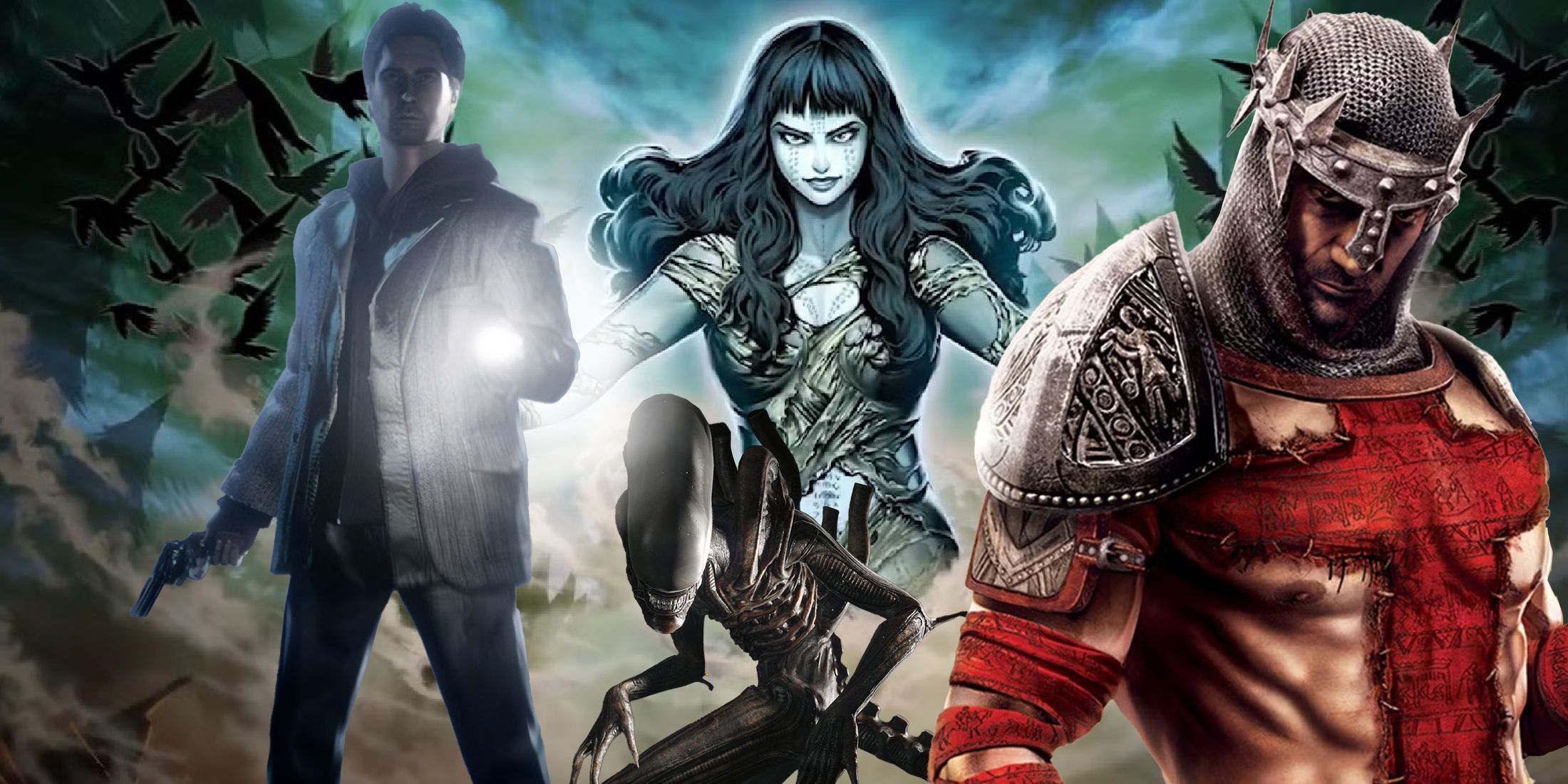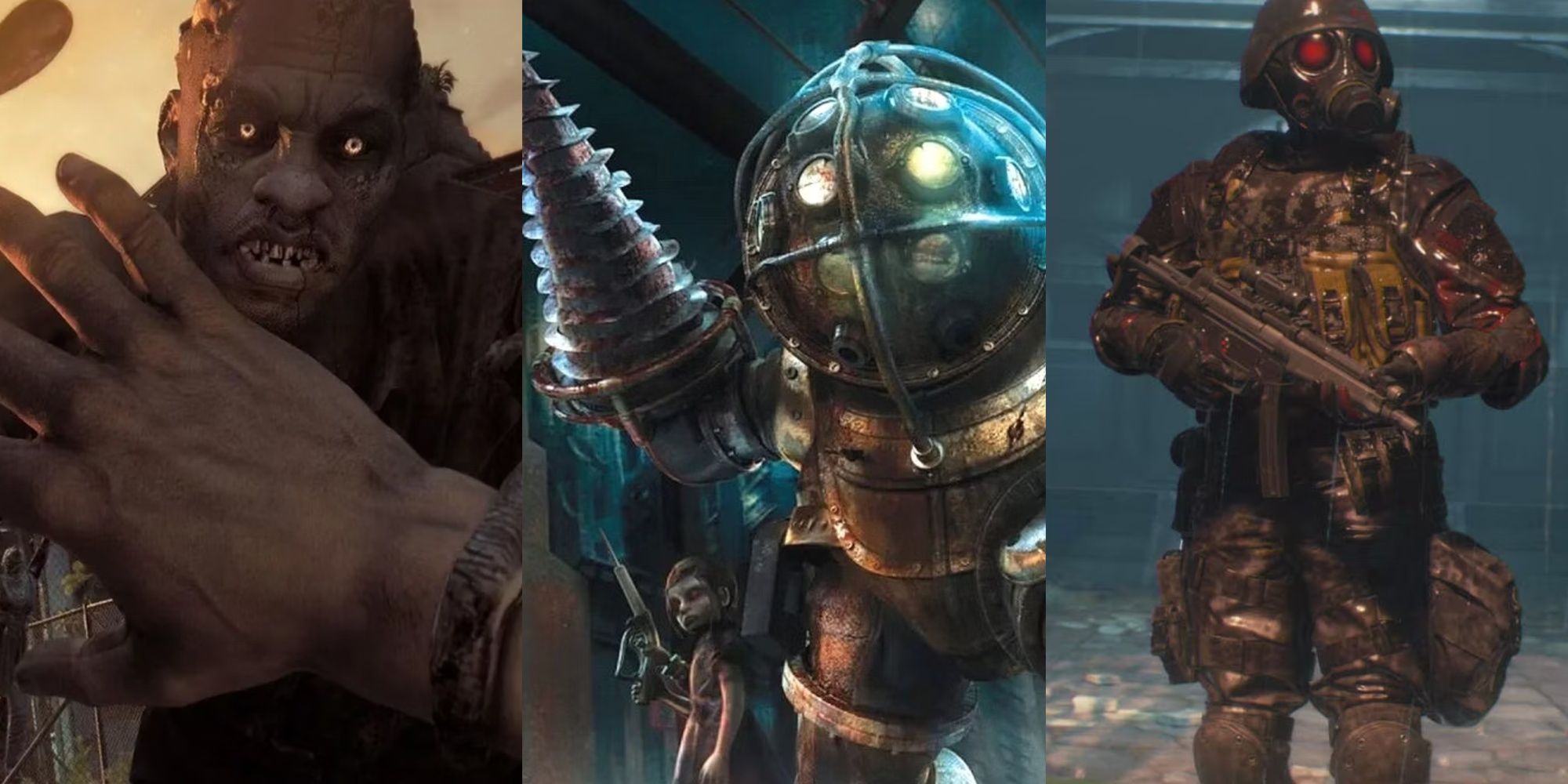
Action Horror: When Fear Gets a Fighting Chance
For decades, horror games have thrived on vulnerability. The slow burn of dread, the scarcity of resources, the feeling of being utterly powerless against lurking terrors – these are the cornerstones of the genre. But what happens when you arm the protagonist, inject a dose of adrenaline, and tell them to fight back? You get action horror, a subgenre that blends the unsettling atmosphere and terrifying creatures of horror with the empowering thrill of combat and tactical gameplay.
Action horror isn’t just about shooting zombies. It’s about navigating a world riddled with danger, using your wits and skills to survive, and facing down monstrous threats with a mix of fear and determination. It’s about the satisfying crunch of a headshot, the desperate scramble for ammo, and the heart-pounding realization that even with a weapon in hand, you’re still one wrong move away from becoming prey.
The Evolution of a Hybrid Genre:
The seeds of action horror were sown early. Games like Castlevania and Ghosts ‘n Goblins offered a gothic aesthetic and challenging enemy encounters, but leaned heavily on platforming and combat. However, it was Alone in the Dark (1992) that truly began to blur the lines. Its fixed camera angles, inventory management, and focus on puzzle-solving were undeniably horror elements, but the inclusion of firearms and rudimentary combat mechanics hinted at a more proactive approach to survival.
The mid-90s witnessed the explosion of Resident Evil (1996), a game that arguably defined the modern action horror template. While resource management and atmosphere were crucial, the core gameplay revolved around exploring the Spencer Mansion, uncovering its secrets, and blasting away hordes of zombies with limited ammo. The fixed camera angles and deliberate movement added to the tension, making every encounter a strategic challenge. Resident Evil proved that fear could be amplified, not diminished, by the player’s ability to fight back.
Following Resident Evil‘s success, the action horror genre flourished. Silent Hill (1999) offered a more psychological and atmospheric experience, but still retained combat elements, albeit deliberately clunky and unsettling to emphasize the protagonist’s vulnerability. Dino Crisis (1999) traded zombies for dinosaurs, offering fast-paced action and strategic resource management in a terrifying Jurassic Park scenario.
The early 2000s saw the genre evolve further, with games like Dead Space (2008) pushing the boundaries of visual horror and visceral combat. The strategic dismemberment of Necromorphs became a key gameplay mechanic, forcing players to think tactically about how to eliminate these grotesque creatures. F.E.A.R. (2005) combined horror elements with intense first-person shooter action, featuring a terrifying antagonist in the form of Alma Wade and a unique "slow-motion" mechanic that added a strategic layer to gunfights.
Defining Characteristics of Action Horror:
While the specific elements may vary, certain characteristics are common across most action horror games:
- Atmosphere of Dread: Even with the ability to fight back, a sense of unease and impending doom is crucial. This is often achieved through sound design, lighting, environmental storytelling, and enemy design.
- Limited Resources: Ammunition, health packs, and other essential items are typically scarce, forcing players to make difficult choices and conserve resources.
- Challenging Combat: Enemies are often relentless and require careful planning and execution to defeat. Combat is rarely a simple matter of pointing and shooting; players must utilize tactics, exploit weaknesses, and manage their resources effectively.
- Vulnerability and Risk: Despite being armed, the protagonist is still vulnerable. A single mistake can lead to a swift and brutal death, emphasizing the high stakes and the constant threat of danger.
- Story-Driven Narrative: Action horror games often feature compelling narratives that explore themes of survival, morality, and the darker aspects of human nature. The story can be a crucial element in amplifying the horror and immersing the player in the game’s world.
- Strategic Gameplay: Successful action horror games require players to think strategically about their actions. This includes planning routes, managing resources, choosing the right weapons, and exploiting enemy weaknesses.
Subgenres and Variations:
Within the broader action horror genre, several subgenres and variations have emerged:
- Survival Horror with Action Elements: This category emphasizes resource management, puzzle-solving, and exploration, but incorporates more robust combat mechanics than traditional survival horror. Examples include Resident Evil 4, The Evil Within, and Alan Wake.
- First-Person Action Horror: This subgenre focuses on visceral first-person combat and often features intense and terrifying encounters. Examples include Dead Space, F.E.A.R., and Killing Floor.
- Third-Person Action Horror: Similar to first-person action horror, but with a third-person perspective, offering a broader view of the environment and more strategic control over movement. Examples include Resident Evil 5, Remnant: From the Ashes, and Control.
- Cooperative Action Horror: These games allow players to team up and face the horrors together, adding a social dimension to the gameplay. Examples include Left 4 Dead, Killing Floor 2, and Back 4 Blood.
Why Action Horror Works:
The appeal of action horror lies in its ability to create a unique and engaging experience that blends the best of both genres. By giving players the tools to fight back, the genre empowers them to confront their fears head-on. The thrill of combat, the satisfaction of overcoming challenging enemies, and the sense of accomplishment that comes with surviving a terrifying ordeal can be incredibly rewarding.
However, the success of action horror depends on striking the right balance between action and horror. Too much action can diminish the sense of dread and vulnerability, turning the game into a mindless shooter. Too much horror can make the gameplay frustrating and overwhelming, especially for players who are primarily drawn to the action elements.
The best action horror games understand this delicate balance and use it to their advantage. They create a world that is both terrifying and empowering, where players are constantly challenged to make difficult choices and use their skills to survive. They understand that fear is not just about being helpless, but about facing your fears head-on and emerging victorious, albeit scarred and changed by the experience.
The Future of Action Horror:
The action horror genre continues to evolve and innovate, with new games pushing the boundaries of what’s possible. We’re seeing a greater emphasis on psychological horror, branching narratives, and player agency, allowing players to shape the story and their own experience. The rise of virtual reality (VR) is also opening up new possibilities for immersive and terrifying action horror experiences.
Games like Resident Evil Village and The Last of Us Part II demonstrate the continued popularity and evolution of the genre, blending compelling narratives, stunning visuals, and intense action sequences. As technology advances and developers continue to experiment, we can expect to see even more innovative and terrifying action horror games in the years to come, ensuring that the subgenre remains a vital and exciting part of the gaming landscape.
Ultimately, action horror is more than just a blend of genres. It’s a reflection of our own anxieties and fears, and a testament to our ability to overcome even the most terrifying challenges. It’s a reminder that even in the face of unimaginable horror, we can find the strength to fight back and survive. And that, perhaps, is the most terrifying and empowering realization of all.

